
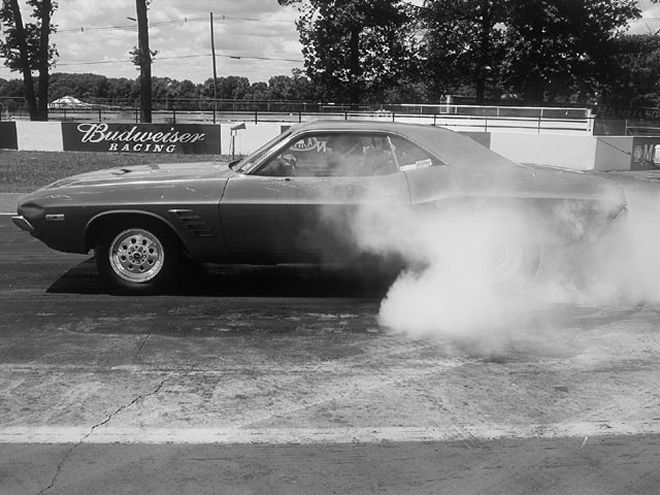
Although there are many things to consider when building an engine combination, few are as critical or mysterious as selecting the proper carburetor. After all, there are dozens of possible candidates for your engine, from vacuum-secondary spread-bores to 4500-series Dominators, not to mention multiple-unit options. Rated by cfm (cubic feet per minute), carburetors significantly determine your fuel curve and engine efficiency. Too little carb, and the engine will starve for air/fuel power at the top end; too much carb, and it won't flow air fast enough to properly atomize the mixture.
This story is a continuation of our slick budget small-block series, which will be familiar to former readers of High Performance Mopar. We built a low-budget 360 and installed it in a Dodge Challenger. This is a street-strip machine, so after consulting with Holley's recommendation chart for size and style of carb based on combination, we selected a 750-cfm double-pumper for the combination. After some baseline testing, we found some significant gains through tuning and spacers. The car uses a stock Edelbrock Performer RPM intake and a set of mildlly ported heads.
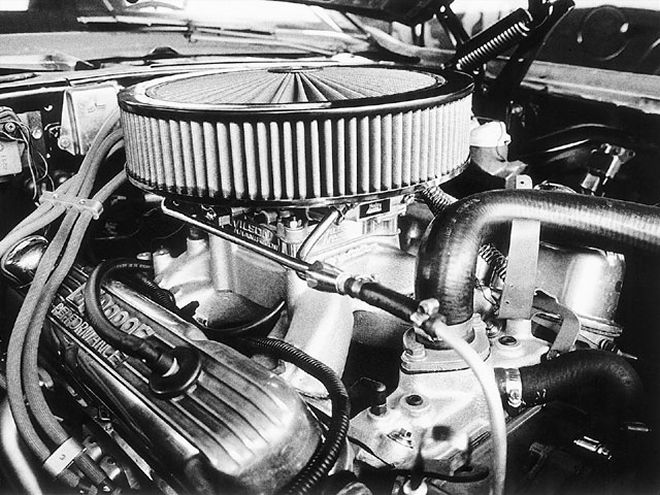
But there was more to the story than simply swapping on the new juice pot. The Challenger's gas tank had numerous rust spots and leaked, a dangerous situation in any regard. It was decided that before we began the real-world testing, this E-Body was going to need some upgrades. To that end, we secured a replacement gas tank and 3/8-inch pickup from The Paddock, prepped it with restoration coatings from Eastwood, and installed it. At the same time, plans were made to install a new 3/8-inch fuel line and a Holley electric pump in the rear; time constraints prevented that from happening for our first test, which, in turn, skewed our baseline results to some extent.
Getting back to carb selection, race-only cars normally run huge carbs because they're lighter, have high-stall converters and steep rear gears, and don't have to be concerned about part-throttle driveability. On the other hand, cars like the ones we use (the Challenger and a '67 440-powered Coronet R/T) see many street miles. Indeed, they're driven more than 90 minutes each way to the test sessions we hold at Raceway Park in Englishtown, New Jersey, so streetability is critical. Strip-testing has proven that better 60-foot times will translate to increased throttle response on the street.
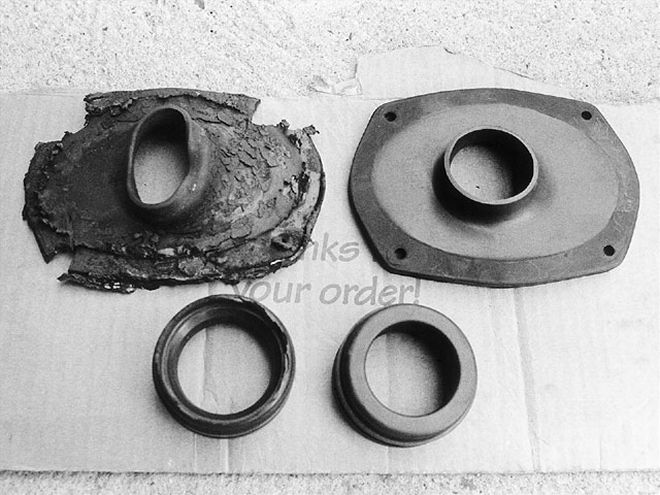 Here's where it starts. The Paddock sent us a new gas tank and a 3/8-inch pickup, which will increase the fuel flow over the 5/16-inch stock version. One additional thing to consider when redoing the tank is to replace the filler neck in the trunk floor as well. Again, The Paddock had what we needed, since our originals were shot. A little petroleum jelly on the tank filler neck will prevent the new neck grommet from sticking when doing the install.
Here's where it starts. The Paddock sent us a new gas tank and a 3/8-inch pickup, which will increase the fuel flow over the 5/16-inch stock version. One additional thing to consider when redoing the tank is to replace the filler neck in the trunk floor as well. Again, The Paddock had what we needed, since our originals were shot. A little petroleum jelly on the tank filler neck will prevent the new neck grommet from sticking when doing the install.
While a given motor/carb combo may seem very good on the shop engine dyno, it may be lacking in street manners. For example, a heavy (3,800-pound) car with a stock converter and 3.23 gears will be a candidate for a vacuum secondary carb, since the engine's response will have a softer upswing; too much fuel here, and the engine will choke trying to catch up. Take the same engine and swap it into a 3,200-pound A-Body that stalls at 3,000 rpm with a 4.10 gear (still streetable, but not as pleasant a cruise ride), and a double-pumper is the way to go; it'll take all the fuel now, thank you. Like any other component, carbs should be selected based on your complete combination. Our 12-second street/strip machines have responded well to Holley double-pumpers. Optimum tuning has been with No. 37 squirters on the 360's 750 carb and No. 40 squirters in the 440's 850 unit.
On The Dragstrip
Before going any further, we'll tell you right now that our fuel-delivery problems affected our initial test. The 5/16-inch line, mechanical pump, and hot summer humidity led to fuel-starvation problems at the top of every pass. As a result, our times were off, but the baseline 750 we normally use gave us a 12.84 best. Holley sent us three others: an 870-cfm Street Avenger and a pair of HP-series carbs in the 750-cfm and 950-cfm versions, but the baseline carb was the best. We gave up and returned to the shop to finish our fuel-system upgrades.
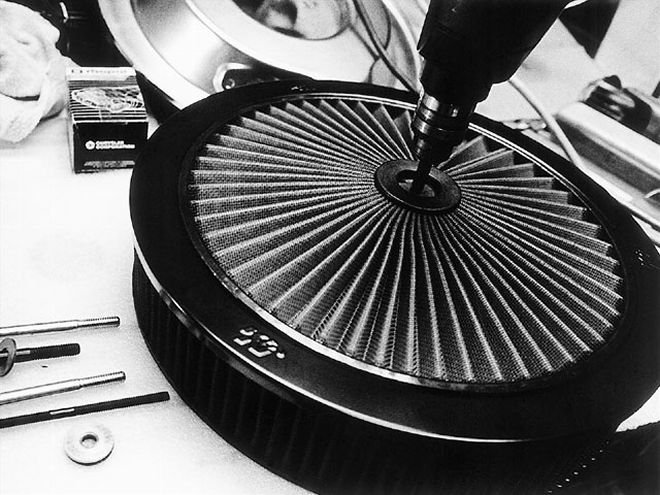
We returned a couple of weeks later with our new 3/8-inch line and electric pump in place. We baselined the Dodge using the aforementioned 750 double-pumper that's been tuned to the engine. It was again typical New Jersey summer weather: high humidity with temperatures in the mid-80s (and a heat index in the 90s). In addition to the carbs, we were also planning on hot-lapping a series of Wilson manifold spacers. These high-quality pieces are basically standard issue on every Winston Cup engine. The spacerless, dialed-in 750 baseline carb gave us a quick, easy best of 12.89 at 103.83. We installed longer studs and trimmed the carb cable hold-down bracket with a hand file before installing Wilson's one-inch open spacer. Why open? Because this actually opens up the intake plenum area for more equal fuel distribution. Back on the E-Town tarmac, the Challenger tripped the lights fantastic with a great 12.77 and 104.65, better than a tenth faster with just this one change. Throttle response and 60-foot times were also noticeably better as well. This thing worked!
Throwing caution to the wind, we decided to give the mild 360 every bit of fuel we could, and the big Holley 950hp went onto the open spacer next. Unfortunately, it proved to be a little more than the engine could take, and the box-stock 950 pot gave us a 12.87 at 104.21, the response and mph telling us we were flat at the bottom end. Hmmm, maybe the carb could use a better signal to the venturi, even if we didn't have all the parts to fully tune it.
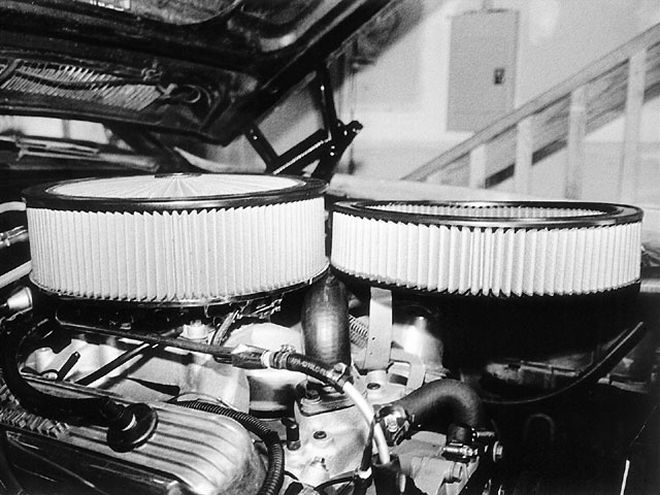 Holley sent us some air cleaners, but we wanted to get the most unrestricted flow possible. We settled on Holley's new Power Shot 14x3 cleaner element and baseplate with K&N's X-Stream top. The K&N 14x4 wouldn't work under the E-Body hood with the Wilson spacer. We also drilled the K&N top to work with the 5/16-inch stud size the HP-series Holleys require, and installed a longer threaded bolt to support the high-filter "sandwich."
Holley sent us some air cleaners, but we wanted to get the most unrestricted flow possible. We settled on Holley's new Power Shot 14x3 cleaner element and baseplate with K&N's X-Stream top. The K&N 14x4 wouldn't work under the E-Body hood with the Wilson spacer. We also drilled the K&N top to work with the 5/16-inch stud size the HP-series Holleys require, and installed a longer threaded bolt to support the high-filter "sandwich."
Back in the pits, we swapped the Wilson open spacer for an almost-identical four-hole unit with tapered openings. Created to improve the bottom-end response of open-plenum/single-plane intakes, this one could help get the big carb to respond to the engine's intake signal, even on the Edelbrock dual-plane. It felt crisper on the burnout, and at the quarter-mile timers we had our answer: 12.78 at 104.35. Despite not having a full cool-down period and the nasty midday air, we got our 1/10 back with a mere spacer swap.
Test five would be with that 950 again, only this time with a Wilson untapered four-hole unit. This would really give a stronger signal to the venturi and improve flow velocity out of the carb, and this is what our 360 liked most. Driveability felt strong, and we clicked off a 12.77 with a 1.79 60-foot time, which would be our best for the day.
In our previous test before the new fuel line went in, the 870 Street Avenger clocked a 13.10 best, and we decided we would skip over it on this day due to the time constraints. Our combination (medium weight, high-stall converter, and 3.55 gears) makes good use of the mechanical-secondary design by not bogging and allowing the engine to rev up quicker. Though a lighter secondary spring in the vacuum-assisted 870 on that first day gave us a couple of hundredths in elapsed time, we decided to get our last couple of laps in using the 750 hp.
The No. 8528 750 hp is Holley's replacement for our old 750 No. 4150 double-pumper, with added tuneability. It was getting late in the day, and we didn't have a chance to cool down the engine as much as we would have liked to. The 750 went on the four-hole Wilson spacer and responded with a very credible 12.83 at 103.85, only 6/100s off of the best with the 200-cfm larger unit. With time for just one more run, we tried it with the Wilson open-spacer, which had been good with our baseline carb. The open-spacer didn't seem to give us the seat-of-the-pants response as the four-hole, and the car slowed to a 12.91 at a slightly faster 103.77 on that lap. Remember, we did the final two runs without the benefit of a full cool-down effort and in the hottest part of the afternoon.
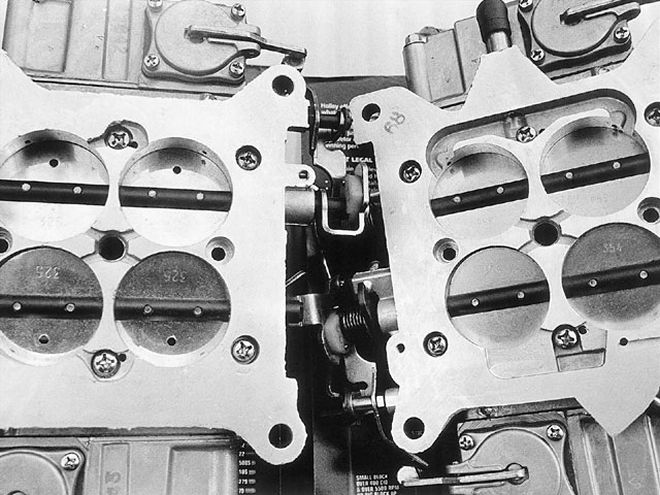
Conclusion
All said, the testing of the Holley carburetors and Wilson spacers on the 360 at the track was a big success. Since we plan to test this same brace of carbs on the 440 Coronet R/T in the near future, we left them unmodified from box stock. The fact that the engine defied what's considered common logic by working the best with the four-hole Wilson one-inch spacer and the giant-for-this-application 950hp was surprising to all of us. In the end, progressive tuning on this carb/spacer combination could indeed result in even better times, which is a tribute to Holley's re-engineering of the 950 style. The 750 hp would have been the logical choice for this displacement and remains so in many street applications. However, the numbers generated by the 950 showed us that the bigger carb made a difference, even in our mild 360. Again, venturi signal and flow velocity are critical with carbs this large; in all cases, factors like camshaft specs and intake/port runner design will make the difference between pass and fail if air velocity isn't strong enough to atomize the fuel; big stall speeds/launch rpm are a must here. Still, in conclusion, we gained a lot of knowledge in this real-world drag test.
Something In The Air
The tests called for a series of differing one-inch spacers and Holley carbs to be used. Here were the players for the day.